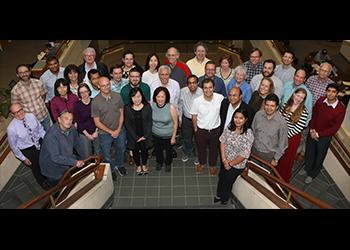GasDay Lab - Director Ron Brown, with Richard Povinelli, George Corliss, Tom Quinn, and others.
GasDay forecasts natural gas consumption for about 30 energy delivery companies all over the US. We build mathematical models, perform statistical analysis of data, develop software, deliver that software to customer utilities, prepare custom research reports, and provide on-going customer support. We function like a small business within the University. Each day, we provide forecasts for nearly 20% of the natural gas in the US for residential, industrial, and commercial uses. We are a student centered learning project, a research project, and the technology transfer project. Students do research and publish in the areas of mathematical modeling, data mining, statistical analysis, database design, computer systems architecture, and software engineering. GasDay supports 10 graduate students and 20+ undergraduate students. Participating faculty come from MCCS, Engineering, and Business.

